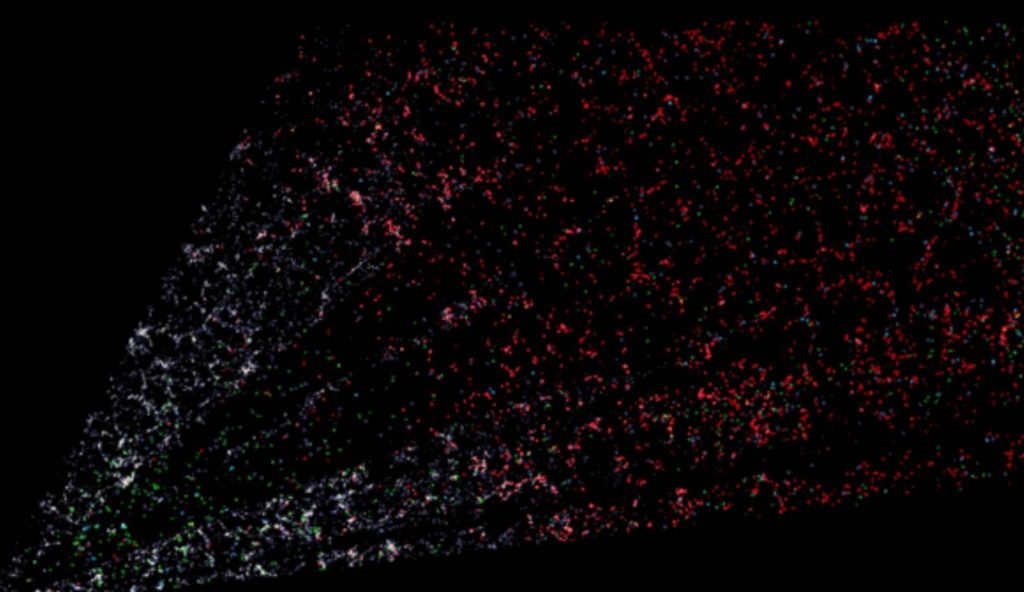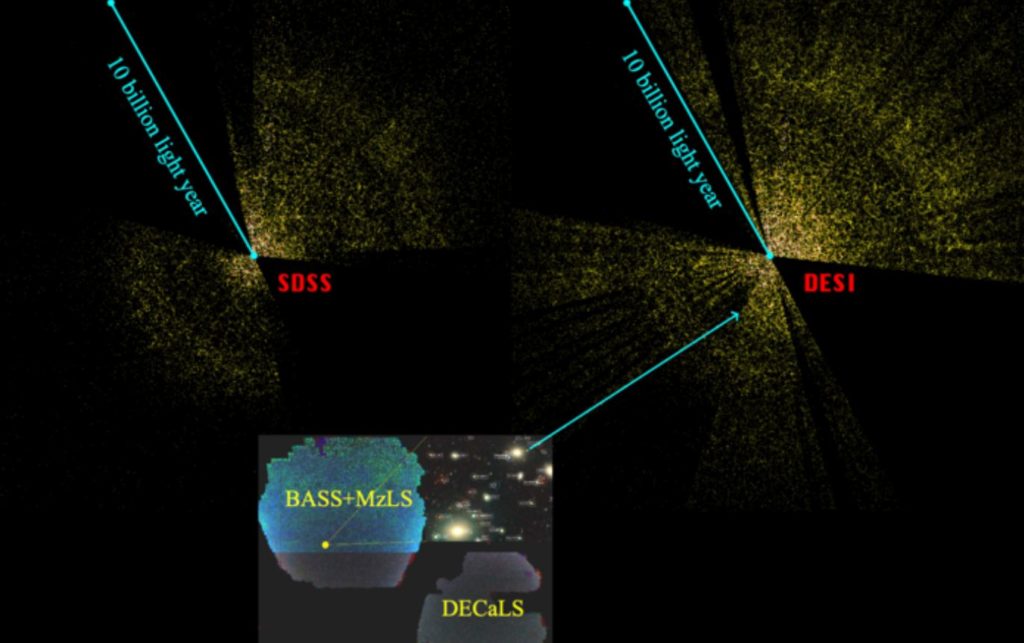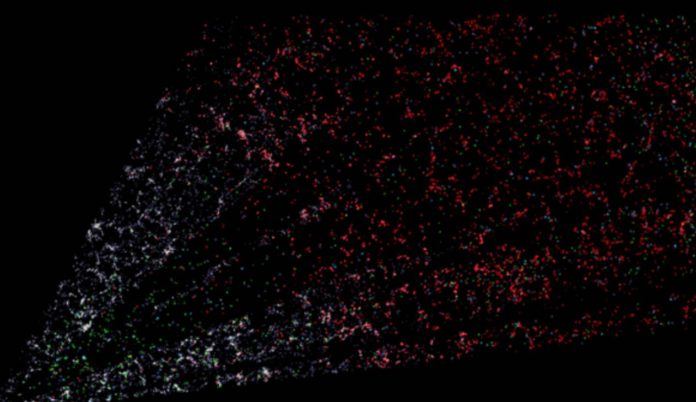The Dark Energy Spectroscopic Instrument (DESI) has capped off the first seven months of its survey run by smashing through all previous records for three-dimensional galaxy surveys, creating the largest and most detailed map of the universe ever. Yet it’s only about 10% of the way through its five-year mission.
Once completed, that phenomenally detailed 3D map will yield a better understanding of dark energy, and thereby give physicists and astronomers a better understanding of the past – and future – of the universe.
Meanwhile, the impressive technical performance and literally cosmic achievements of the survey thus far are helping scientists reveal the secrets of the most powerful sources of light in the universe.
DESI is an international science collaboration managed by the Department of Energy’s Lawrence Berkeley National Laboratory (Berkeley Lab) and the survey team of the Beijing-Arizona Sky Survey (BASS) at National Astronomical Observatories of Chinese Academy of Sciences (NAOC).
DESI scientists are presenting the performance of the instrument, and some early astrophysics results, this week at a Berkeley Lab-hosted webinar called CosmoPalooza, which will also feature updates from other leading cosmology experiments.
“There is a lot of beauty to it,” said Berkeley Lab scientist Julien Guy, one of the speakers. “In the distribution of the galaxies in the 3D map, there are huge clusters, filaments, and voids. They’re the biggest structures in the universe. But within them, you find an imprint of the very early universe, and the history of its expansion since then.”

Yet it’s only about 10% of the way through its five-year mission. Once completed, DESI will help us to better understand the expansion of the universe and galaxy formation and evolution.
DESI is an international science collaboration project involving researchers from the US, China, Spain, UK, France, etc. It upgrades the 4-m Mayall telescope at Kitt Peak, Arizona, with a large field-of-view instrument, which can observe 5,000 galaxies in only one exposure. It aims to measure the redshifts of tens of millions of galaxies, construct the 3-D matter distribution across the universe, and reveal the nature of dark energy.
In order to create such a 3-D map, the BASS team in NAOC, together with the DESI imaging team, jointly released a huge 2-D map of the universe in January 2021, which paves the way for the spectroscopic survey.

DESI was originally proposed over a decade ago. It has come a long way to reach this point. DESI started its construction in 2015. The instrument saw its first light in late 2019. In December 2020, DESI turned its eyes to the sky again after several months of shutting down, testing out its hardware and software. By May 2021, it was ready to start its science survey.
The survey has already cataloged over 7.5 million galaxies, smashing through all previous records of the galaxy surveys. The previous largest galaxy survey is the Sloan Digital Sky Survey (SDSS). In November 2021 alone, DESI cataloged redshifts of 2.5 million galaxies. By the end of its run in 2026, DESI is expected to have over 35 million galaxies. During the phases of survey validation and formal run, the NAOC team contributes to the survey observations and data analyses.
DESI has obtained a lot of data and now the collaboration is turning to its scientific analysis. The BASS team got the funding support from the National Natural Science Foundation of China (NSFC) and hopes to yield scientific outputs on galaxy formation and evolution, including exploring the rare objects of extremely metal-poor galaxies, dwarf galaxies, and green-pea galaxies, etc. These galaxies are of key importance to the galaxy formation in the early universe and cosmic reionization.
Image Credit: D. Schlegel/Berkeley Lab using data from DES
You were reading: DESI’s three-dimensional “CT scan” of the Universe
